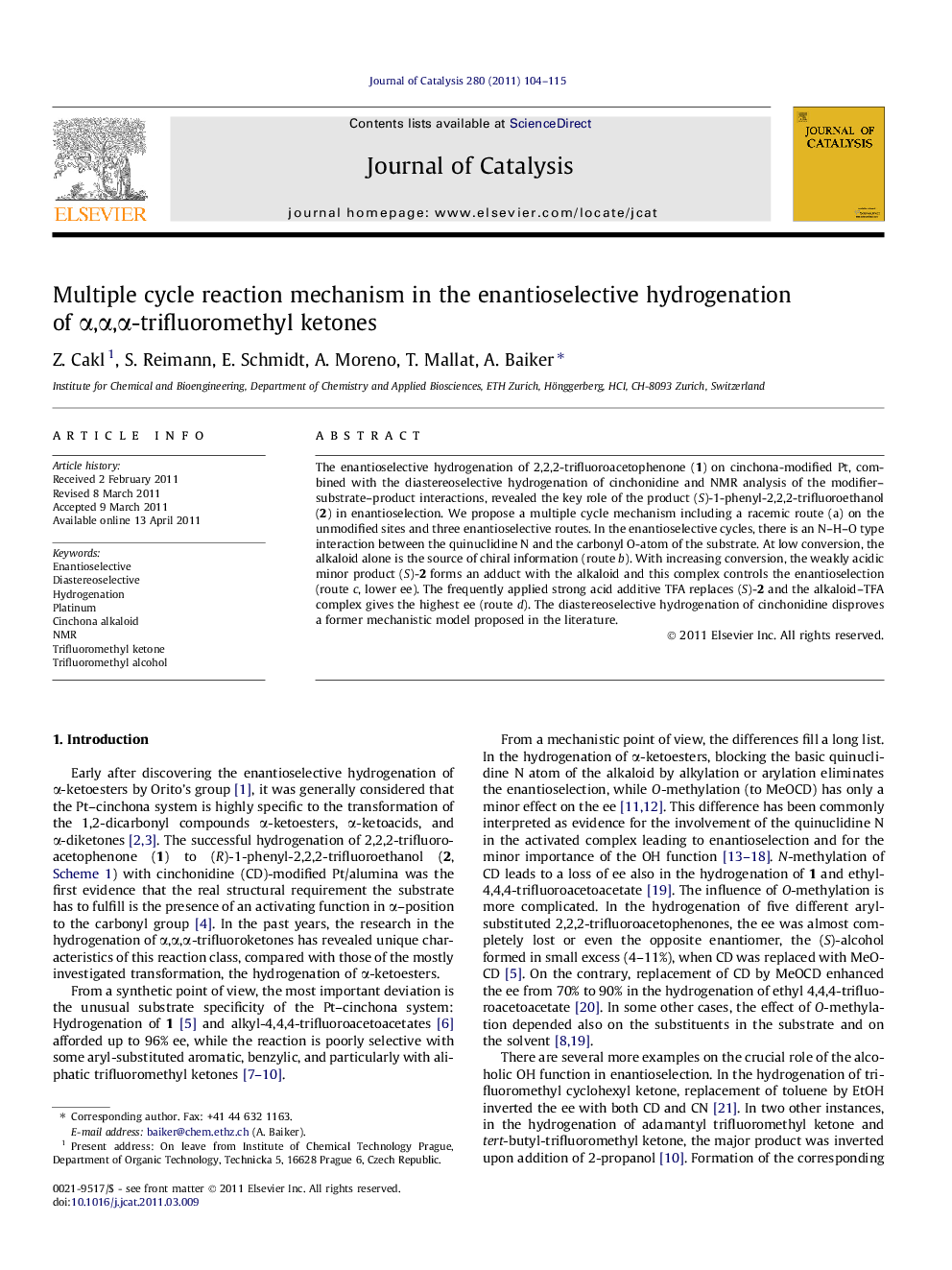| کد مقاله | کد نشریه | سال انتشار | مقاله انگلیسی | نسخه تمام متن |
|---|---|---|---|---|
| 61733 | 47601 | 2011 | 12 صفحه PDF | دانلود رایگان |

The enantioselective hydrogenation of 2,2,2-trifluoroacetophenone (1) on cinchona-modified Pt, combined with the diastereoselective hydrogenation of cinchonidine and NMR analysis of the modifier–substrate–product interactions, revealed the key role of the product (S)-1-phenyl-2,2,2-trifluoroethanol (2) in enantioselection. We propose a multiple cycle mechanism including a racemic route (a) on the unmodified sites and three enantioselective routes. In the enantioselective cycles, there is an N–H–O type interaction between the quinuclidine N and the carbonyl O-atom of the substrate. At low conversion, the alkaloid alone is the source of chiral information (route b). With increasing conversion, the weakly acidic minor product (S)-2 forms an adduct with the alkaloid and this complex controls the enantioselection (route c, lower ee). The frequently applied strong acid additive TFA replaces (S)-2 and the alkaloid–TFA complex gives the highest ee (route d). The diastereoselective hydrogenation of cinchonidine disproves a former mechanistic model proposed in the literature.
A combined catalytic and NMR study has uncovered a multiple cycle mechanism in the enantioselective hydrogenation of 2,2,2-trifluoroacetophenone (1) on cinchona-modified Pt. A key element is the involvement of the minor product (S)-1-phenyl-2,2,2-trifluoroethanol (2) in the enantioselection.Figure optionsDownload high-quality image (51 K)Download as PowerPoint slideHighlights
► The multiple cycle mechanism includes one racemic and three enantioselective routes.
► H-bonding interactions play a critical role in enantioselection.
► The “unexpected inversions” are not due to protonation of the alkaloid.
► Diastereoselective hydrogenation of cinchonidine sheds doubts on earlier mechanistic models.
Journal: Journal of Catalysis - Volume 280, Issue 1, 16 May 2011, Pages 104–115